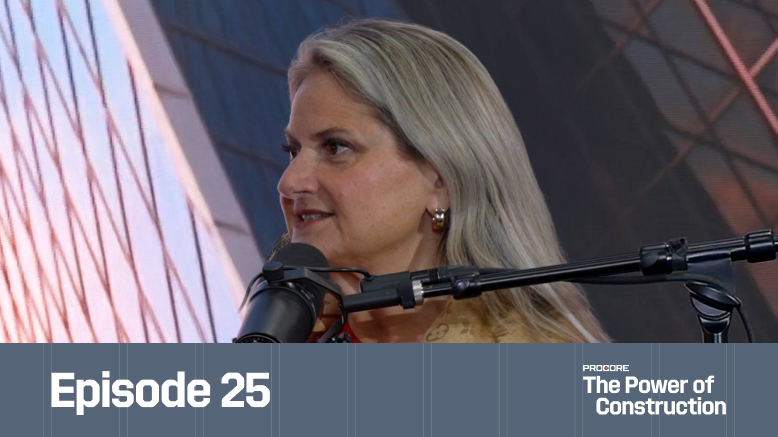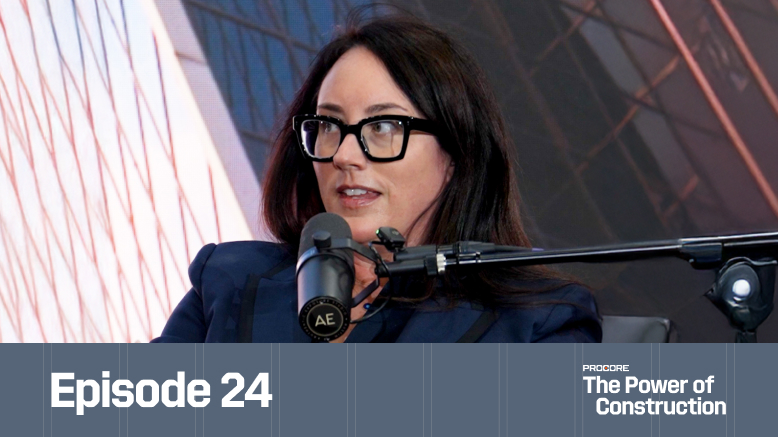The Origin Story: From Data to Future Vision
The Future State of Construction report emerged from Procore's recognition that their customer conversations had evolved from tactical "how to" discussions about specific software features toward strategic dialogues about industry transformation. Customers wanted to understand what Procore saw across the industry and how those insights could inform their own strategic decisions. This shift prompted Procore to conduct comprehensive research that could provide meaningful strategic direction for the entire construction industry.
The Global Research Journey: A Year-Long Investigation
Kris Lengieza embarked on a world tour spanning over a year, literally circling the globe through Dublin, Dubai, Sydney, California, and Texas. The journey involved meeting with over a thousand customers and running more than ten workshops to gather insights about the future of construction.
These workshops provided rare opportunities for industry leaders to divorce themselves from day-to-day operations and think about what the industry could look like ten years from now, stretching beyond current comfort zones to envision transformational possibilities.
The Workshop Magic: From Skepticism to Possibility
The workshops intentionally pushed participants to think 10-20 years into the future, creating initial discomfort among some leaders who felt uncomfortable with scenarios that seemed impossible given current industry state.
However, a transformation occurred when digitally mature customers shared that they were already implementing 20% of these "future" capabilities. This created peer-to-peer learning opportunities among owners, general contractors, and specialty contractors, demonstrating that future states were rooted in technologies and practices already emerging in the industry today.
Current Industry Headwinds: The Challenges We Face
The industry faces several significant challenges that must be addressed to achieve future growth:
Workforce Crisis: 41% of the workforce will be gone by 2031, creating a massive talent gap that must be filled.
Productivity Challenge: 45% of projects run over budget or behind schedule by at least 20%, indicating fundamental inefficiencies in current processes.
Profitability Gap: While the industry experiences massive growth, there's a concerning divergence between growth and profitability, with profits eroding despite increased revenue.
These headwinds require foundational shifts in how the industry operates, focusing on better risk management and strategic investments in future capabilities.
Three Core Foundations: People, Platforms, and Data
All future transformations in construction will be rooted in three fundamental areas:
People: The backbone of everything the industry does, requiring investment in workforce development, knowledge transfer, and talent retention strategies.
Platforms: Connected technology that enables different operational approaches, moving beyond isolated tools toward integrated systems that support comprehensive workflows.
Data: The ability to collect, analyze, and leverage data for better decision-making, moving from gut-instinct decisions toward evidence-based strategies.
These three foundations must work together to enable the four major shifts needed for industry transformation.
The Future of Productivity: Augmentation, Not Replacement
The future of productivity centers on blending automation and augmentation on job sites. Rather than replacing people, robotics and automation will serve as tools that workers use daily to accomplish their tasks more efficiently. Technologies like autonomous vehicles (similar to Waymo cars) are coming to job sites, where they can operate more effectively than on public roads due to controlled environments and fewer regulatory constraints.
Real-world examples already exist, such as Winvic's operations in Birmingham, England, where multiple robotic technologies operate simultaneously—including site layout robots for floor marking and remote-operated cranes for safer, more efficient material handling. 55% of survey respondents believe these technologies will significantly disrupt the industry within five years, with over 80% expecting eventual transformation.
The Future of Workforce: Technology as Talent Magnet
While labor shortage remains the industry's number one concern, technology provides solutions for both retention and knowledge transfer. The workforce challenge isn't just about numbers—it's about bridging generational knowledge gaps and making the industry attractive to new talent who expect technological sophistication.
Key innovations include using AI and mobile technology for natural language knowledge collection, extending expert capabilities through remote assistance (imagine seeing what someone sees through Meta glasses from anywhere), and bringing expertise to multiple job sites simultaneously. Some companies are already bringing people out of retirement to capture and transfer critical knowledge downstream, leveraging technology to extend careers and expertise beyond physical limitations.
The Future of Decision Making: Data as Silent Partner
Currently, construction decision-making relies heavily on spreadsheets, software dashboards, and gut instincts. The future involves data becoming a "silent partner" that helps repeat past successes and avoid known pitfalls. This is particularly crucial for new hires who don't have opportunities for extensive career investment and mentorship that previous generations enjoyed.
Despite its importance, data-driven decision making didn't even rank in the top five areas impacting successful digital transformation—a concerning gap. However, companies that effectively capture, integrate, and standardize their data can save up to 13% of total project time. Some organizations are already building AI agents trained on their best practices and policies to help both field and office workers make faster, better-informed decisions.
The Future of Design: Vertical Integration and Master Builder Return
Engineering currently suffers primarily from human error, with clear paths toward automation of many design tasks. The next 8-10 years will see design tools become significantly more intuitive and easier to use. Contractors, owners, and trades possess extensive data about what's constructible, cost-effective, and valuable—data that needs to be applied to engineering and design processes.
This evolution points toward increased vertical integration, with contractors taking more control of the design process, moving back toward a "master builder" mentality. Trade-specific software for electrical and mechanical work is already enabling contractors to take over detailed design creation.
Interestingly, large engineering firms aren't threatened by this shift—they're pivoting to focus on higher-value activities and working more closely with contractors, recognizing that drafting and construction documentation isn't where they add primary value.
Technology Adoption: The Number One Growth Opportunity
The Future State of Construction survey revealed that technology adoption was cited as the number one opportunity for growth and innovation in construction. This isn't theoretical—the technology exists and is proven in other industries. The question isn't whether robotic and automated technologies will arrive on job sites, but when they'll be widely adopted and when the industry will recognize their full benefits.
The challenge lies in moving from philosophical alignment with future visions to practical implementation. Industry leaders understand the destination but need clarity on the "how"—the specific steps and strategies required to bridge current capabilities with future possibilities.
Practical Applications: Training AI Agents on Best Practices
Some forward-thinking companies are already implementing AI agents that go beyond automating submittals and RFIs. These agents help field workers make faster decisions by taking photos and applying training based on company best practices, policies, and procedures. This represents a practical application of data-driven decision making that's achievable today, though implementation remains challenging.
The concept of "training your agent" represents a shift from theoretical AI discussions to practical building blocks that can be implemented incrementally, providing immediate value while building toward more comprehensive automation.
The Path Forward: From Vision to Implementation
The report establishes clear future states the industry can work toward, but the real value comes in ongoing workshops focused on implementation strategies. These sessions explore what's already working, what challenges and risks exist, and how the industry can collaborate to address obstacles preventing future state realization.
Success requires industry-wide collaboration to tackle challenges collectively rather than individual companies struggling in isolation. The future of construction isn't just about individual company transformation—it's about industry-wide evolution that benefits all participants through shared innovation and best practice development.
Key Takeaways: Four Foundational Shifts
The Future State of Construction requires four fundamental shifts:
- Productivity Transformation: Embracing robotics and automation as worker augmentation tools rather than replacement technologies
- Workforce Evolution: Leveraging technology for knowledge transfer, career extension, and talent attraction while bridging generational gaps
- Decision Making Revolution: Moving from gut-instinct decisions to data-driven strategies with AI as a silent partner
- Design Integration: Increasing contractor control of design processes through vertical integration and master builder approaches
These shifts are interconnected and must be supported by investments in people, platforms, and data. The construction industry has the capability to overcome current challenges and achieve the growth required by 2040, but success depends on collaborative industry-wide transformation rather than isolated individual efforts. The future isn't a distant dream—elements are already being implemented by forward-thinking companies, proving that dramatic change is both possible and practical.








